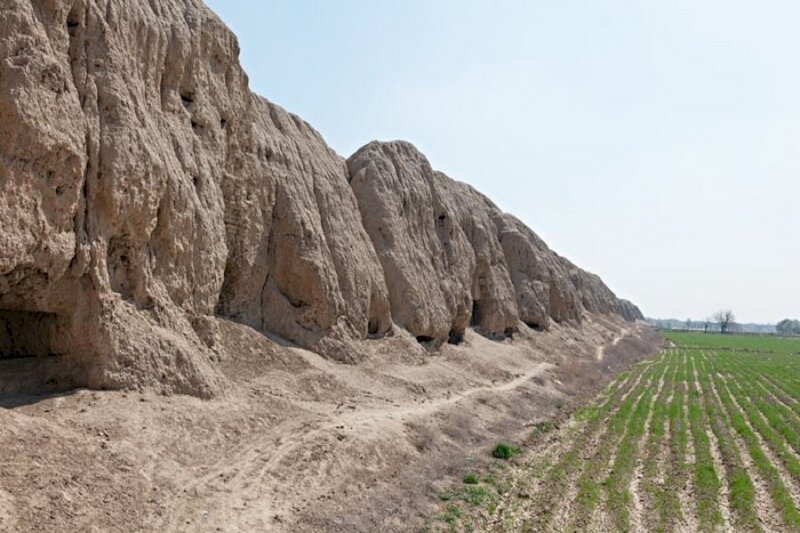A peek into ancient Iraj military fortress in Tehran

TEHRAN- The historical Iraj fortress, one of the largest military fortresses of the ancient times, is located in the heart of a wide plain near Asgarabad village, in Pishva, southeast of Tehran
The natural scenery and old texture of the village and the soaring bricks of the fortress as well as its close distance to the Iranian capital city makes the fortress a luring tourist destination.
However, over the centuries, from its 34 towers on the north side, 42 towers on the south side, and 36 towers on the east and west sides, there are only two towers remaining in the fortress.
Some estimate that the crumbling fortress dates from the Sassanid era (224–651), however, there are experts who believe that it belongs to the Kayanian dynasty era, a semi-mythological dynasty, which is mentioned in the Persian poet Ferdowsi’s magnum opus, the Shahnameh.
Based on the relics found in the fortress, the experts believe that the mudbrick structure was repaired and restored during the Sassanid era, on the other hand, the architectural form of the ruined fortress is not similar to Islamic buildings at all, which shows that it should be much older.
Measuring about 3,000 square meters in area, the fortress had walls between 17 and 22 meters wide and 25 meters height, but due to erosion over the centuries only lengthy and tall clay ramparts have been left.
Form another point of view, the fortress seems to be on the verge of total elimination due to years of neglect though it was registered on the National Cultural Heritage List 2003.
Iraj fortress has four gates, of which the northern gate is located in front of Mount Damavand, which offers an extraordinary view. In recent years, the gates and walls on the east side of the building have been restored.
Based on evidence from excavations in 2008, archaeologists believe that the Iraj fortress was likely abandoned shortly after construction.
It seems that people who constructed the Sassanid fortress may have received bad news or were informed of a forthcoming invasion, therefore they leave the site.
The findings also indicated that the structure had been built to house 5,000 people, while the pottery dishes discovered at the site were adequate for only 500 people, so the experts cannot determine the purpose of the structure precisely.
From a very early history to modern times, defensive walls have often been necessary for cities to survive in an ever-changing world of invasion and conquest.
Fortifications in antiquity were designed primarily to defeat attempts at escalade, and to the defense of territories in warfare, and were also used to solidify rule in a region during peacetime.
Uruk in ancient Sumer (Mesopotamia) is one of the world’s oldest known walled cities. The Ancient Egyptians also built fortresses on the frontiers of the Nile Valley to protect against invaders from neighboring territories.
Many of the fortifications of the ancient world were built with mud brick, often leaving them no more than mounds of dirt for today’s archaeologists.
ABU/MG
Leave a Comment